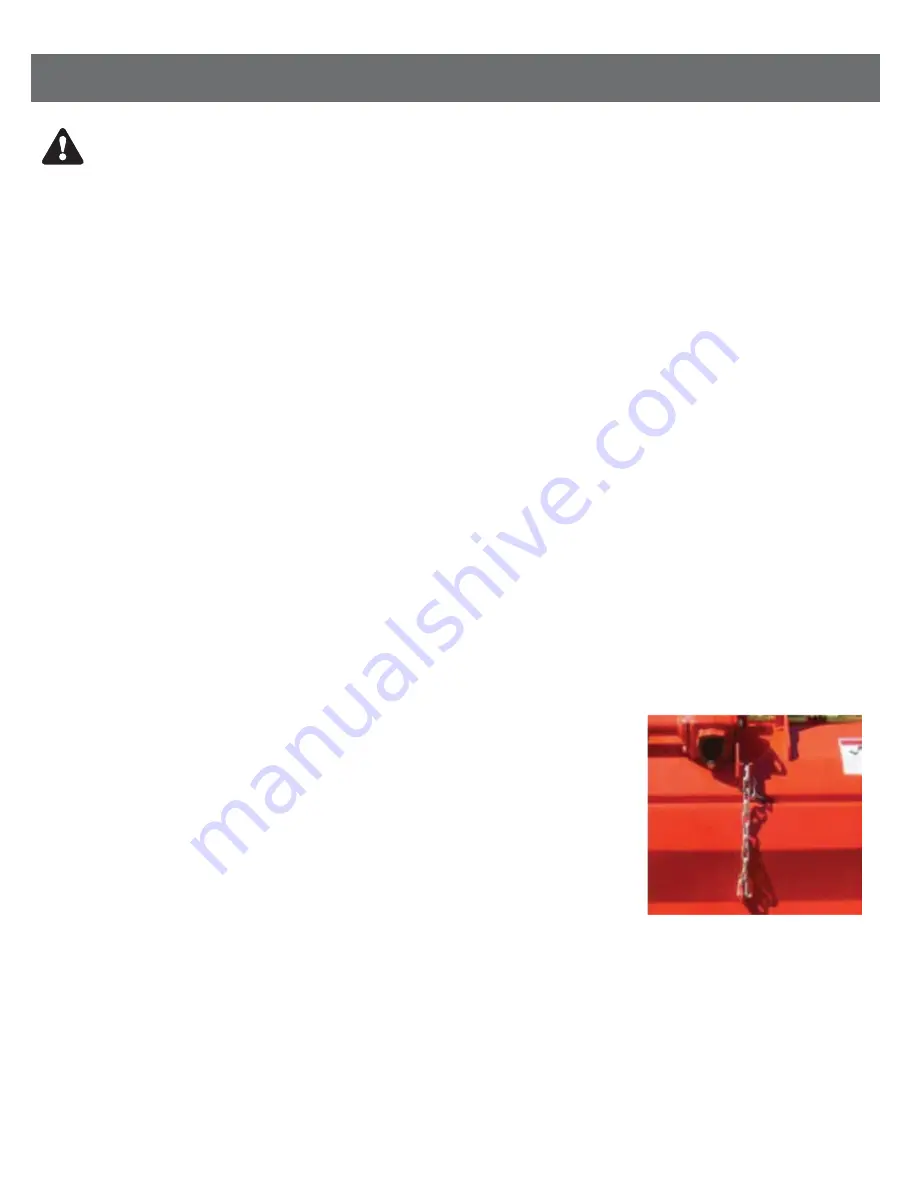
OPERATION (CONT.)
BE-TSxx
Slip clutches have adjustable torque settings. The torque setting varies with the different compression
of each spring. All the springs should have an equal amount of compression.
IMPORTANT: Do not over-tighten the compression nuts as this may impair performance or cause premature
wearing of the slip clutch.
Slip Clutch Adjustments:
Slip Clutch must be adjusted before first use or after a storage period.
1. Using a marker, scribe a line across the exposed edges of the clutch plate and friction discs.
2. Back off compression nuts to free friction discs by turning each nut 2 revolutions.
3. Start the tractor and run the driveline at a low idle to slip the friction discs. This will remove the dirt, corrosion
and surface floss from the clutch plate faces.
4. Disengage the PTO, shut down tractor and wait for all components to come to a complete stop.
5. Inspect the clutch and ensure that the scribed marking on the disc and plates have changed position.
If any two marks are still aligned, this is an indication that these discs have not slipped. It may be necessary
to completely disassemble the clutch to free them up.
6. After ensuring all discs are free, tighten the compression nuts, uniformly, exactly 2 revolutions to reset the
clutch original pressure.
Working Depth Adjustments:
The working depth is controlled by raising or lowering the side skids. If the side skids are raised, the working
depth increases. By lowering the skids, the tilling depth will decrease.
Tailgate Adjustment:
The tailgate can be adjusted to help smooth and compact the tilled ground.
Release the chain can secure to the desired height.
Start Up:
After making the necessary adjustments, lower the rotary till until the blades
are a couple of inches from the ground.
Engage PTO and slowly lower the tiller to begin working.
Removal and Storage
After finishing , remove the rotary tiller from the tractor.
1. Put the PTO driveline in a safe location so it will not become damaged.
2. Clean and dry the equipment.
3. Replace any damaged or worn parts.
4. Check all bolts and nuts for tightness.
5. Lubricate and protect the machine from the elements.
7


































